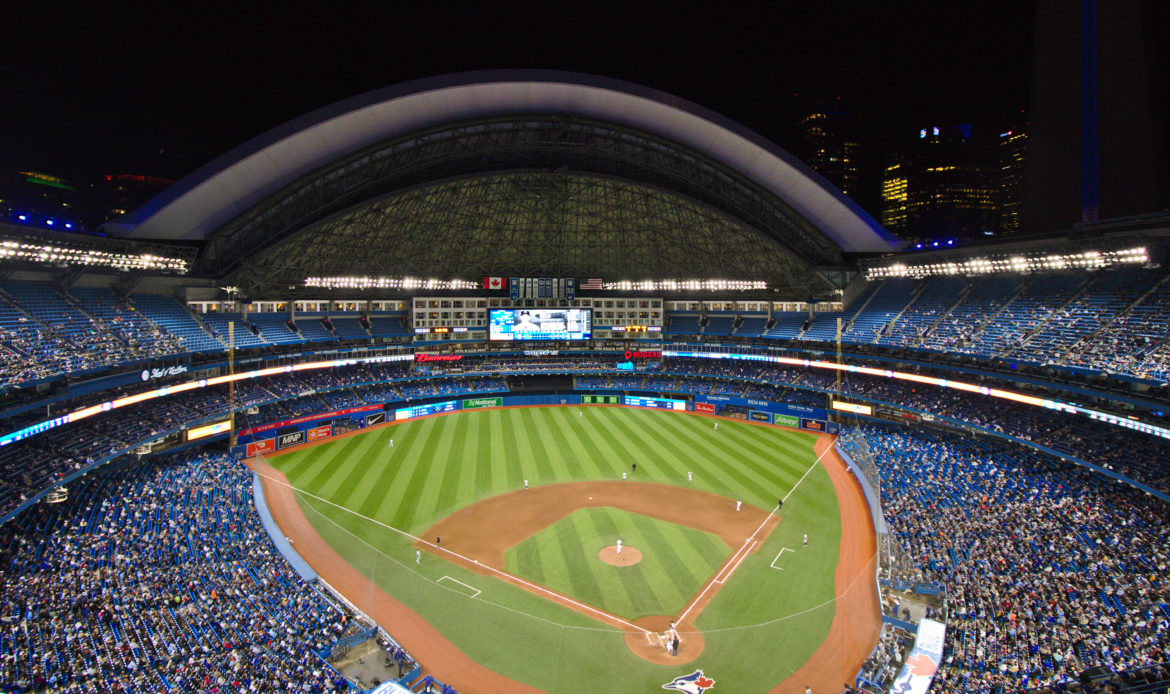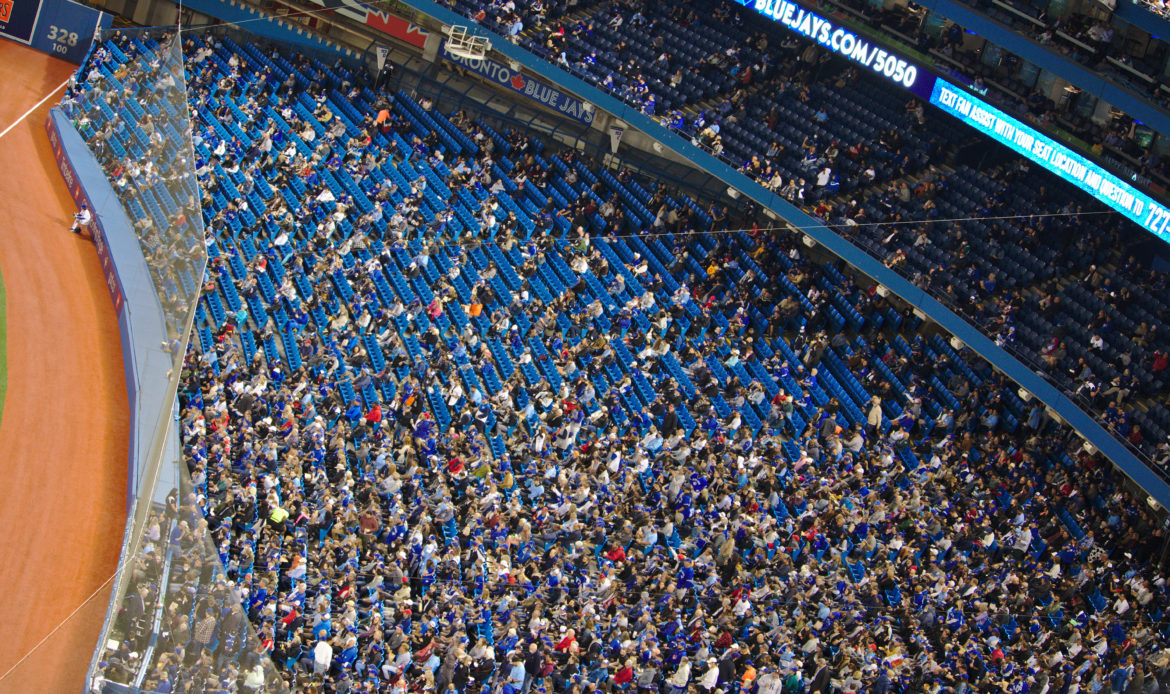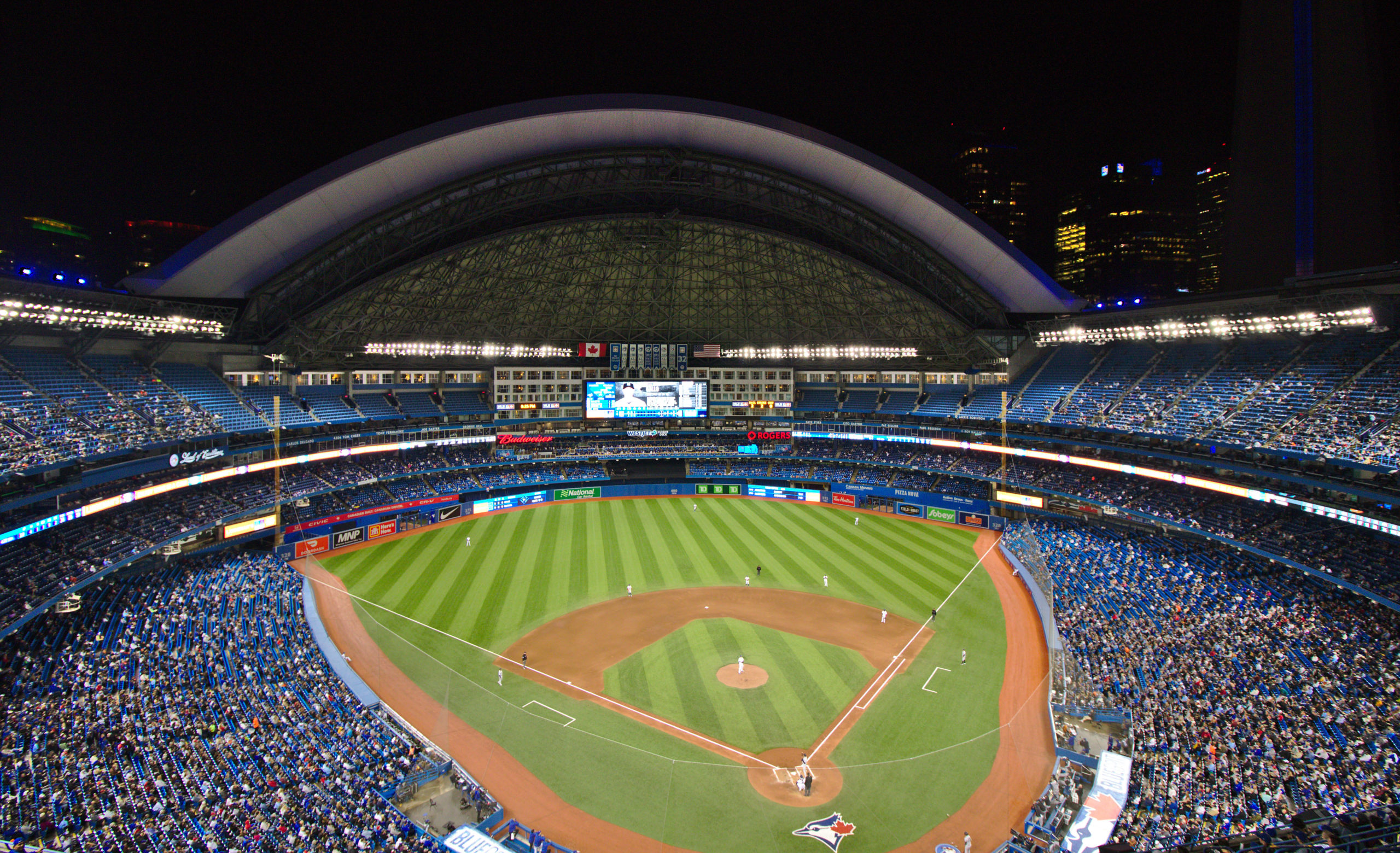Sports Have Finally Returned to Toronto, and That’s Great News for Fans and Players

If you’re an NBA fan like me, you’ll likely remember quite vividly when the league suspended all games on March 11th, 2020 following Utah Jazz center Rudy Gobert testing positive for COVID-19.
There were many reactions to this bombshell announcement, especially since the NBA was the first major sports league to completely suspend all play. My immediate concern at the time was of course the health and safety of the players for my favourite team, the Toronto Raptors. After all, they had played the Utah Jazz just two days prior on March 9th in Salt Lake City.
Despite these concerns and countless others, the focus online immediately shifted towards the league as a whole and the impact of the suspension. As an active member of “NBA Twitter” I came across a variety of tweets regarding the suspension, including everything from worries about players who had COVID-19 to full on denial that the virus was a threat. I specifically remember sitting at my computer, checking my socials, scrolling through the hashtags and wondering when sports would be able to return.
In hindsight, it is easy to see that the COVID train was going to keep on moving no matter what we did at that point. Regardless, every subsequent sports shutdown felt like a gut punch to sports fans all around the world. On March 12th, the NBA G-League suspended its 2019-20 season, Major League Soccer suspended its season for thirty days and the NHL suspended its season effective immediately. On March 13th, NASCAR and Formula 1 both postponed their next two events and on March 16th MLB postponed the start of its baseball season. (Bleacher Report has an excellent timeline of all these COVID-related sports cancellations.)
But with all of that chaos now in the rearview and the slow return of sports over these last eighteen months, with many fan-less games in the interim as a temporary solution, sports fans once again have something to cheer (in-person) for.
In-person sports spectating has finally returned to the Toronto area, the largest sports market in the country. It all started with the Toronto Maple Leafs when the Ontario government allowed 550 fully vaccinated health care workers to attend game seven of their first round series against the Montreal Canadiens on May 31st, 2021, free of charge, courtesy of team owners Maple Leaf Sports and Entertainment (MLSE). Intense pressure was put on the government to make this happen after the Canadiens had 2,500 fans in the Bell Centre in Montreal just two days earlier in game six. Unfortunately, the Leafs ended up losing game seven (and the series as a result), so as it turned out those 550 hard working heroes did not have the winning effect many fans were hoping for.
Regardless of this cherry on top of the disappointment pile for Leafs fans, this showed that Doug Ford and his public health advisors were coming around to the idea of having in-person spectators at major sporting events once again. For the government that made Toronto one of the harshest cities in North America in terms of the length of COVID-19 restrictions, this was a huge step.
The Toronto Blue Jays kicked things into high gear when they returned to Toronto on July 30th to play the Kansas City Royals at the Rogers Centre. Needless to say, after not playing a game in Toronto for 670 days (since September 29th, 2019) both players and fans were very excited. Even if you are only a causal Blue Jays fan, you have likely heard about the Jays’ home stadium “journey” this season. They began the season playing in their spring training stadium in Dunedin, Florida, then moved to Sahlen Field (their Triple-A affiliate stadium) in Buffalo on June 1st and then, as mentioned, they moved back home to the Rogers Centre in Toronto on July 30th.
Then, on September 24th, the Ontario government announced that they were doubling capacity limits. This meant that the Blue Jays could now seat 30,000 fans in the Rogers Centre instead of the previous 15,000 allowed since their return in July.
As research for this piece (and let’s be honest, for fun) I attended the first of these increased capacity games on Tuesday, September 28th against the New York Yankees, one of our bitter rivals in the American League East division. The game was rather important as the Jays, Yankees and Boston Red Sox were all neck and neck for the two coveted American League Wildcard playoff positions. I was seated in section 525 on the top level of the Rogers Centre, just left of center behind home plate and let me tell you, the atmosphere was electric.
As someone who has been to many Blue Jays games over the years, this was a huge nostalgia trip for me. Everything from the enormous crowds gathering into the stadium, the wildly overpriced drinks and snacks, the occasional crass fan yelling very targeted insults at certain opposing players and the “OK Blue Jays” theme song during the seventh inning stretch brought me back to a time before COVID when tens of thousands of fans would cram into a stadium without a care in the world.
As someone who has been to many Blue Jays games over the years, this was a huge nostalgia trip for me. Everything from the enormous crowds gathering into the stadium, the wildly overpriced drinks and snacks, the occasional crass fan yelling very targeted insults at certain opposing players and the “OK Blue Jays” theme song during the seventh inning stretch brought me back to a time before COVID when tens of thousands of fans would cram into a stadium without a care in the world.
But these days, you have to care quite a bit to be able to attend a sporting event with a large audience such as I did. On the way in, I had to present proof of vaccination and valid government-issued ID, scan my own ticket (which was on my phone – no paper tickets allowed) and wear my mask at all times when on the concourse and seated but not eating.
Were all of these regulations followed by each and every fan? Of course not. Many fans were sitting in their seats mask-less, despite not consuming any ballpark fare, and there is not much the staff at the Rogers Centre could do to strictly police fans who were simply enjoying the game from seats that they paid for.
Clearly, it is not a perfect system, but I am impressed with the COVID-conscious choices you can make as an attendee. Are you a little more cautious and would prefer socially distanced seating? There are sections designated for you. Are you comfortable being in a crowd but want to have your mask on the whole time? You can eat before the game to avoid any need to unmask yourself. The Blue Jays organization has taken the time to think about the needs of their audience and allowing fans to self-select based on their own comfort level is definitely the way forward for in-person sports, in my opinion.

Despite the still-obvious restrictions, attending the game truly felt like a watershed moment for me personally in the never-ending saga that is COVID-19. It is amazing what a chilly Toronto night and a crowd of 28,769 raucous and long-deprived sports fans can do for your personal morale.
Further watershed moments for the return of in-person sports have also taken place recently; the Toronto Raptors preseason began October 4th at Scotiabank Arena with about 50% capacity, while the Maple Leafs began their preseason just a little while earlier at Scotiabank on September 25th in front of 10,000 mask-adorning fans. Toronto FC returned on July 17th to BMO Field to an audience of 7,000, and the Toronto Argonauts beat the Winnipeg Blue Bombers in their return to BMO Field on August 21st with 9,866 onlookers.
The return-to-in-person-sports-fever has also reached our very campus as the UofT Varsity Blues football team began their season on September 18th at Varsity Stadium vs the University of Ottawa Gee-Gees with a crowd of 2,500 cheering them on. The Blues came away with a close victory, winning 11-10 in the two hour and thirty-six minute matchup.
I spoke to Varsity Blues football head coach Greg Marshall via email regarding the return of in-person fans. He said “Our players were excited to get the chance to play and compete… They were especially excited to share that experience with friends and family again!”. I also spoke to recruiting coordinator Joe Cappiello (again via email) who replied “It was great having our fans back! It made all the difference having them in our corner. The noise they made for our defense helped give our guys that last push needed to win the game.”
That “last push” is exactly what fans add to the world of sports. Even without fans, world-class athletes can put on amazing shows of skill and many arenas pump in canned cheering and applause to replicate the presence of in-person spectators. What event organizers can never replicate, however, is the human element. Fans add spontaneity, excitement and motivation for the athletes. All you have to do to prove this is look at the receipts; before their return to Toronto, the Blue Jays had a record of 51-48 (.515). Since their return on July 30th, they have performed noticeably better; 36-22 (.620) to be exact. Playing in front of the home crowd has clearly had a positive effect on the players and their performance as a team. Vladimir Guerrero Jr. put it best: “Fans, we need you! Let’s get loud Toronto!”
What seemed completely impossible back in the depths of the pandemic is now finally happening. Passionate Toronto sports fans are once again crowding stadiums to cheer on their favourite teams. As long as you are vaccinated and feel comfortable with crowds during these times, I would highly recommend watching some sports in person. We live in an amazing sports city with world-class teams, players and fans. Now that COVID is finally allowing in-person viewing, it would be a shame to miss it.
